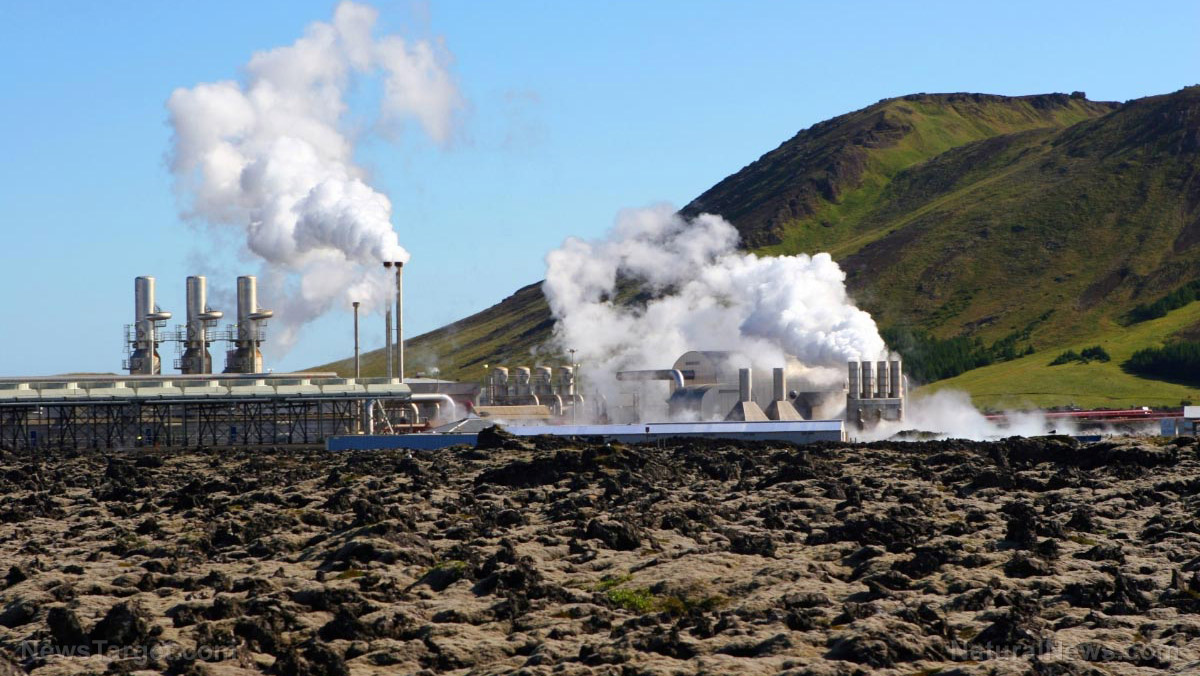Clean hydrogen energy revolution is being hijacked by corporate greed, crony deals, and political shortsightedness
10/08/2025 / By Lance D Johnson

The promise of hydrogen as a clean energy panacea has never burned brighter. A new study published in Proceedings of the National Academy of Sciences lays out a roadmap for how hydrogen—specifically, hydrogen derived from biomass (Bio-H?)—could slash U.S. greenhouse gas emissions by as much as 1.7 billion metric tons between 2025 and 2050. That’s the equivalent of taking 370 million gas-powered cars off the road for a year.
However, the window to make this work is slamming shut, thanks to a perfect storm of political backpedaling, corporate greed, and a stubborn refusal to learn from the past. The recent passage of the One Big Beautiful Bill Act—a piece of legislation that reads like a love letter to the fossil fuel industry—has pulled the rug out from under the most promising clean hydrogen incentives just as they were gaining traction. Meanwhile, the industries that stand to profit most from business-as-usual are already positioning themselves to control the narrative, the technology, and, ultimately, the transition.
Key points:
- Hydrogen isn’t a silver bullet—it’s a tool, and its climate benefits depend entirely on how it’s produced. Today, 95% of U.S. hydrogen comes from natural gas, a process that emits as much CO? as burning coal. The study reveals that biomass-based hydrogen (Bio-H?) could cut emissions by 1.6 to 2 times more than scenarios without it—but only if we act now.
- The political rug-pull: The Inflation Reduction Act (IRA) introduced the 45V tax credit, a landmark incentive for clean hydrogen. But the One Big Beautiful Bill Act—passed in July—eliminates those credits after 2027, just as the industry is trying to scale up. This isn’t just shortsighted; it’s a deliberate sabotage of the one policy that could have made clean hydrogen competitive.
- The corporate shell game: Big Oil and Gas are rebranding themselves as “hydrogen leaders,” but their version of hydrogen is blue hydrogen—a trojan horse that relies on natural gas paired with carbon capture, a technology that’s expensive, unproven at scale, and leak-prone. Meanwhile, Bio-H?, which uses agricultural waste and forest residues, is being sidelined despite its immediate viability.
- The demand problem: Right now, 75% of hydrogen use is slated for transportation—think fuel-cell cars and trucks—but the biggest emissions cuts would come from industrial sectors like steel and fertilizer production. Yet without targeted policies, hydrogen will flow to the easiest markets, not the ones where it can do the most good.
- The clock is ticking: The study warns that if we don’t invest in Bio-H? now, we’ll miss our chance to bridge the gap until water electrolysis (splitting water into hydrogen using renewable energy) becomes cost-competitive—which won’t happen until 2045 at the earliest.
The hydrogen bait-and-switch: Why we’re being sold a false promise
Let’s start with a hard truth: Most of the hydrogen produced today is dirtier than coal. The dominant method, steam methane reforming (SMR), takes natural gas, strips out the hydrogen, and dumps the CO? into the atmosphere. The industry calls this “gray hydrogen,” but it might as well be called “fossil fuel hydrogen” because that’s exactly what it is. Then there’s “blue hydrogen,” which pairs SMR with carbon capture and storage (CCS). Sounds great, right? Except CCS is energy-intensive, prone to leaks, and has a dismal track record—most projects fail to capture more than 50-70% of emissions, and some, like Chevron’s Gorgon CCS project in Australia, have captured as little as 30% while emitting more than expected.
Enter green hydrogen, made by splitting water with renewable electricity. This is the gold standard—zero emissions, infinite potential. But here’s the catch: It’s not ready for prime time. Scaling up green hydrogen requires massive amounts of cheap, reliable renewable energy, vast tracts of land for solar and wind farms, and trillions in infrastructure—pipelines, storage, fueling stations. The International Energy Agency (IEA) estimates that to meet global climate goals, green hydrogen production would need to increase 50-fold by 2030. That’s not happening without a Manhattan Project-level push, and right now, the U.S. is heading in the opposite direction.
So what’s left? Bio-H?—hydrogen made from biomass. It’s not as clean as green hydrogen, but it’s far cleaner than gray or blue, and it can be deployed today using existing infrastructure. The Yale study found that Bio-H? could cut emissions by 1.8 to 5.5 kg of CO? per kg of hydrogen produced—a huge improvement over natural gas-based hydrogen. And because it uses agricultural waste, forest residues, and energy crops like switchgrass, it doesn’t compete with food production. In fact, it could reduce wildfire risks by clearing out overgrown forests.
Washington is killing clean hydrogen before it starts
In 2022, the Inflation Reduction Act (IRA) introduced the 45V tax credit, a game-changer for clean hydrogen. The credit offered up to $3 per kilogram of hydrogen produced, depending on how clean it was. Green hydrogen got the highest tier, but Bio-H? qualified too. For the first time, clean hydrogen had a real shot at competing with dirty gray hydrogen.
Then came the One Big Beautiful Bill Act: Passed in July with bipartisan support (because nothing unites politicians like handouts to corporate donors), the bill gutted the 45V credit after 2027. That might sound like a long time, but in energy terms, it’s the blink of an eye. Building a hydrogen plant takes 5-10 years from planning to operation. No investor in their right mind will sink billions into a project if the incentives disappear before they can turn a profit.
“This is a classic case of pulling the ladder up after asking people to climb,” said Yuan Yao, the Yale researcher who led the study. “We’re telling the market, ‘Build clean hydrogen—oh, but by the way, we’re taking away the support in four years.’ It’s a recipe for failure.”
Worse, the bill explicitly favors blue hydrogen by extending tax breaks for carbon capture projects—the same ones that have consistently under-delivered on emissions reductions. “It’s like swapping a cigarette for a vape and calling it quitting,” said Wei Peng, a co-author from Princeton. “You’re still hooked on fossil fuels.”
Clean hydrogen to be used in all the wrong ways
Here’s where things get even more frustrating. Even if we do manage to produce clean hydrogen, we’re planning to use it in all the wrong ways. The Yale study found a glaring mismatch between where hydrogen is most effective at cutting emissions and where it’s actually being deployed:
- Industrial sectors (steel, fertilizer, chemicals) offer the highest emissions reductions per unit of hydrogen—up to 147 million metric tons of CO? per exajoule (EJ) in steel-making alone.
- Transportation (cars, trucks, ships) has lower emissions reductions per unit—just 54 million metric tons per EJ—but it’s gobbling up 75% of hydrogen supply.
“We’re pouring hydrogen into fuel tanks when we should be pouring it into blast furnaces,” Yao said. “It’s like using a fire hose to water your lawn while your house burns down.”
The study found that targeted subsidies, like paying steel plants to switch to hydrogen-based production, could dramatically accelerate emissions cuts. But right now, there’s no political will to make that happen.
So what’s the solution? The Yale study lays out a clear path, but it requires political courage—something in short supply in Washington.
- Save the 45V credit—and expand it for Bio-H?
- The One Big Beautiful Bill Act must be repealed or amended to extend clean hydrogen incentives through at least 2040.
- Bio-H? should get its own dedicated funding stream, separate from green hydrogen, to ensure it isn’t crowded out by natural gas interests.
Innovations that diversify energy production in a cleaner way should be allowed to compete, not stifled and cut off by an industry that dominates through greed and Congressional control.
Sources include:
Submit a correction >>
Tagged Under:
big government, bioenergy, biomass energy, blue hydrogen, Carbon capture, Clean Energy, climate policy, climate solutions, corporate lobbying, energy, energy infrastructure, energy transition, fertilizer production, fossil fuels, fuel, green hydrogen, greenwashing, hydrogen fuel, industrial emissions, Inflation Reduction Act, political corruption, renewable energy, steel industry, transportation emissions
This article may contain statements that reflect the opinion of the author
RECENT NEWS & ARTICLES
COPYRIGHT © 2017 SCIENTIFIC NEWS




















